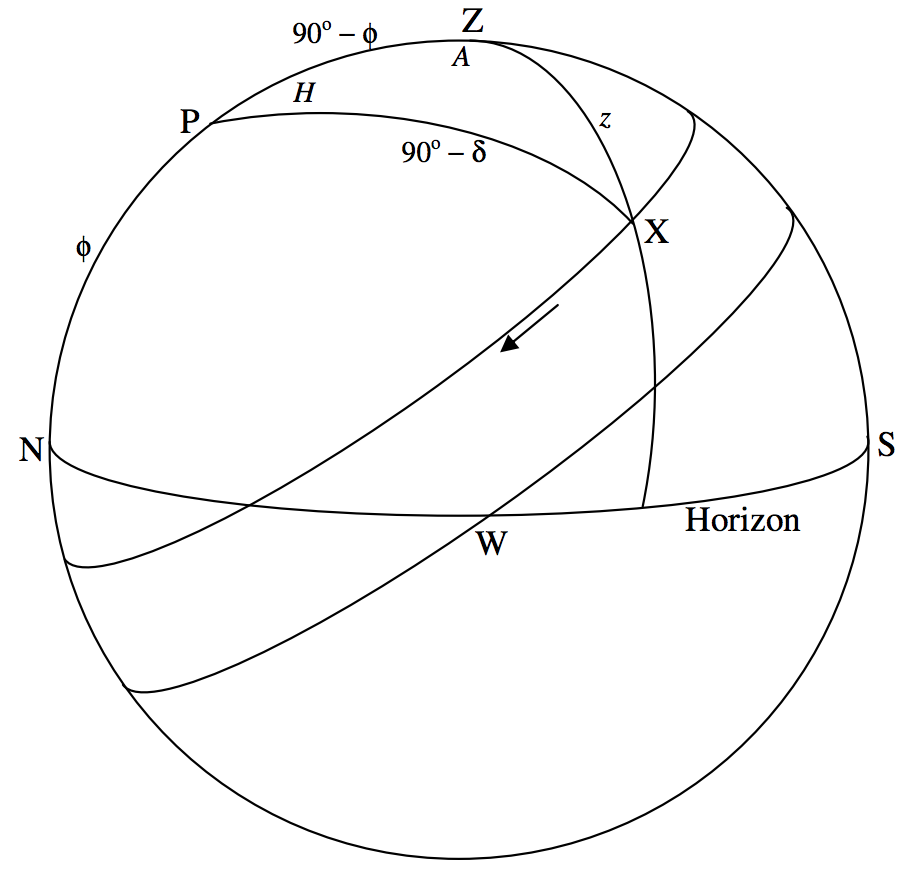6.4: Conversion Between Equatorial and Altazimuth Coordinates
( \newcommand{\kernel}{\mathrm{null}\,}\)
Whereabouts in the sky will a given star be at a certain time? This as a typical problem involving conversion between equatorial and altazimuth coordinates. We have to solve a spherical triangle. That is no problem – we already know how to do that. The problem is: which triangle?
The first problem, however, arises from the phrase “at a certain time”. In particular, if we want to know where a star is, for example, at 2002 November 24, at 10:00 p.m. Pacific Standard Time as seen from Victoria, whose longitude is 123∘ 25′.0 W, we need to know the local sidereal time at that instant.
The calculation might go something like this.
From the Astronomical Almanac we find that the local sidereal times at Greenwich at 0h UT on November 25 and 26, 2002, are
November 25: 04h 16m59s
November 26: 04 20 56
We want the local sidereal time at November 24d 22h 00m PST
= November 25d 06h 00m UT
By interpolation we find that the local sidereal time at Greenwich at that instant is 10h 17m 58s.
The longitude of Victoria is 08h 13m 40s, and therefore the local sidereal time at Victoria is 02h 04m 18s.
We have overcome the first obstacle, and we now know the local sidereal time (LST).
We’ll ask ourselves now what are the altitude and azimuth of a star whose right ascension and declination are α and δ. We also need the latitude of the observer (= altitude of the north celestial pole), which I’ll call ϕ. The hour angle H of the star is LST − α.
The triangle that we have to solve is the triangle PZX. Here P, Z and X are, respectively, the north celestial pole, the zenith and the star. That is, we solve the triangle formed by the star and the poles of the two coordinate systems of interest. I draw the celestial sphere in figure VI.3 as seen from the west. I have marked in the hour angle H, the codeclination 90∘ − δ, the altitude ϕ of the pole, the zenith distance z and the azimuth A measured from the north point westwards.
In triangle PZX, we know ϕ, δ and H, so we immediately find the zenith distance z by application of the cosine formula (Equation 3.5.2) and the azimuth A from the cotangent formula (Equation 3.5.5).
Problem. Show that the hour angle H of a star of declination δ when it sets for an observer at latitude ϕ is given by cosH=−tanδtanϕ. This will enable you now to find the Local Sidereal Time of starset, since LST=hour angle plus right ascension, and then you can convert to your zone solar time.
Show also that the azimuth A of starset, westward from the north point, is given by tanA=−sinϕtanH.

FIGURE VI.3


